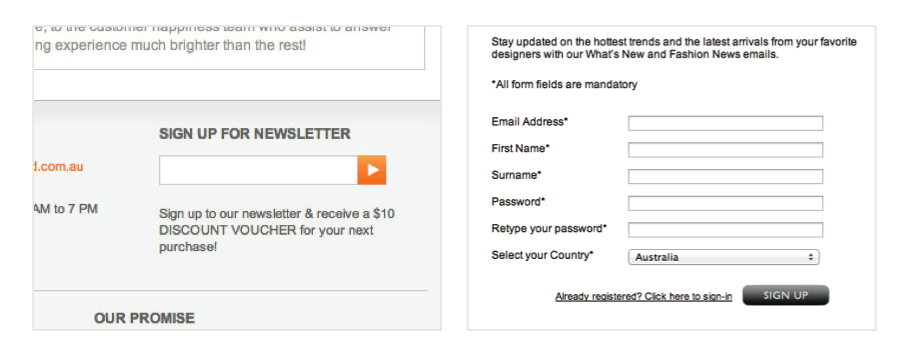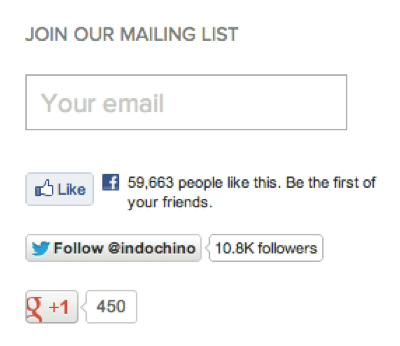- All Posts
- /
- The Veritable Guide to E-Commerce Newsletters

The Veritable Guide to E-Commerce Newsletters
Messaging and Automation-
 Chris Hexton
Chris Hexton
-
Updated:Posted:
On this page
A guide to increasing subscriptions and conversions for e-commerce newsletters
Contents
- Introduction
-
Answering real questions
- What you’ll learn
- Key findings from top retailers
- Chapter 1 – Why don’t you love me? How to get customers to subscribe
- Chapter 2 – How much is too much? When and how often to email your list
- Chapter 3 – To segment or not to segment? Why segmentation wins
- Chapter 4 – A silver lining. How to make the most of unsubscribes
- Conclusion
Introduction
The average person spends nearly 30% of their computing time in their inbox. It’s not surprising that, whilst being one of the cheapest, email is still the most effective marketing channels there is.
E-commerce newsletters work. Famed UK luxury retailer Net-a-Porter’s email campaigns account for 32% of their revenues, pulling in over £1 million ($1.6 million) in sales per month.
If your newsletters are not accounting for 30% of your revenue then you should think hard about what you can do to improve them.
The best online retailers optimize their email newsletter campaigns from start to finish by tweaking their sign up forms, email frequency, content, and design to drive their list size and conversion rates as high as they can.
By following a few best practices you too can test and optimize your email newsletters and increase the revenues they drive by an order of magnitude. This guide is here to walk you through the things you need to be doing in order to maximize the effectiveness of your campaigns.
Answering Real Questions
This guide is here to help you nail your newsletters. We’ve broken down the core components of the process from lead capture to conversion, crunched the numbers and analyzed the best stores from across the globe to give you over 20 real-world examples that you can actually use.
Best of all we’ve kept things brief so you can improve right away without spending weeks wading through pages of marketing fodder.
What you’ll learn
- How to ensure people actually subscribe to your newsletter!
- When and how often to send newsletters to build trust and keep your list active.
- Why segmentation leads to more sales.
- How to make the most of unsubscribes.
The four chapters and 15+ examples in this guide will help you pracitcally improve your e-commerce email newsletters from lead capture to sale.
You’ll improve your deliverability, make your customers happier and increase your sales. It’s a win-win.
Key findings from the world’s best online retailers
When researching this guide, we reviewed 10 leading e-commerce retailers. Here are some of our findings, aggregated.
The good:
- 100% of stores complied with CAN-SPAM
- 100% of stores offered a newsletter option.
- 70% of stores nailed best practice when it comes to newsletter footers content.
The bad:
- 40% of stores hindered the subscription process asking for unnecessary information that could be inferred automatically or using a simpler subscription form.
- 80% of stores could improve their segmentation. Most offered male/female options and a limited set of subscription categories. Even stores offering the most basic segmentation options of male vs. female felt like they rarely used the information.
- 60% of stores made unsubscription unncessarily complex or had errors in the process.
Chapter 1: Why don’t you love me? How to get customers to subscribe
1. Keep the sign up form simple

What to do and what not to do. Make subscription a no brainer. Every single step you add to the process can cause a drop off in subscriptions by as much as 90%.
Once a customer decides they want to hear more from you, you don’t want to get in the way.
Let your customers subscribe without signing up. Don’t ask them unnecessary questions. Letting customers sign up makes their life easy by storing their address and card details or giving them access to a permanent cart of wishlist but it should not be confused with your email marketing list. Customers who sign up to your store may well want to receive updates or they may not and vice versa.
It’s not up to you to decide, it’s up to you to make it as easy as possible to do what the customer wants.
2. Place it on every page
Put your subscription form on every page. Every single one.
Don’t force customers to search for your form and certainly don’t make them click a link to get to it. All the major email service providers make it easy to create a simple subscribe form. Style it up and place it in your footer: it’s the norm and it’s readily accessible site-wide.

J.Crew made over $280 million online last year. Guess where they put their subscription form? In the footer, on every page!
3. Social proof always wins
There is no better form of marketing than word of mouth. People trust their friends and, when recommended by a friend, this trust extends toward you.
Being the savvy online retailer you are you’re most certainly engaging with your customers on Twitter and Facebook. At this stage there is no better way to track word of mouth and show off how popular you are than via your social channels. Use this to your advantage.
If you have a following on any social network, remind potential subscribers that they’re not the only ones in the world interested in what you have to say. In fact, by adding evidence of your social presence you’re enforcing the feeling that they’re missing out by not subscribing and becoming part of your community.

Growing at 100% year-on-year, fast moving Indochino re-inforces the value of it’s newsletter using their exceptional presence on other public channels.

